BIOL 1030 / Topic 10a: Plant Reproduction
1/49
There's no tags or description
Looks like no tags are added yet.
Name | Mastery | Learn | Test | Matching | Spaced |
|---|
No study sessions yet.
50 Terms
What reproductive cell process do gametophytes go through, and where does this process take place?
Gametogenesis (a mitotic process in plants) occurring in the gametangia of gametophyte, the archegonia (for females) and antheridia (for males).
What reproductive cell process do sporophytes go through, and where does this process take place?
Sporogenesis occurring in sporangia of sporophyte.
Roughly, how long does the gametophyte stage run for in seed plants? Also, how big or how small are they?
Short-lived and microscopic.
Given you have one microsporocyte, how many microspores survive? How many microgametophytes do you then have?
1 microsporocyte : 4 microspores : 4 microgametophytes.
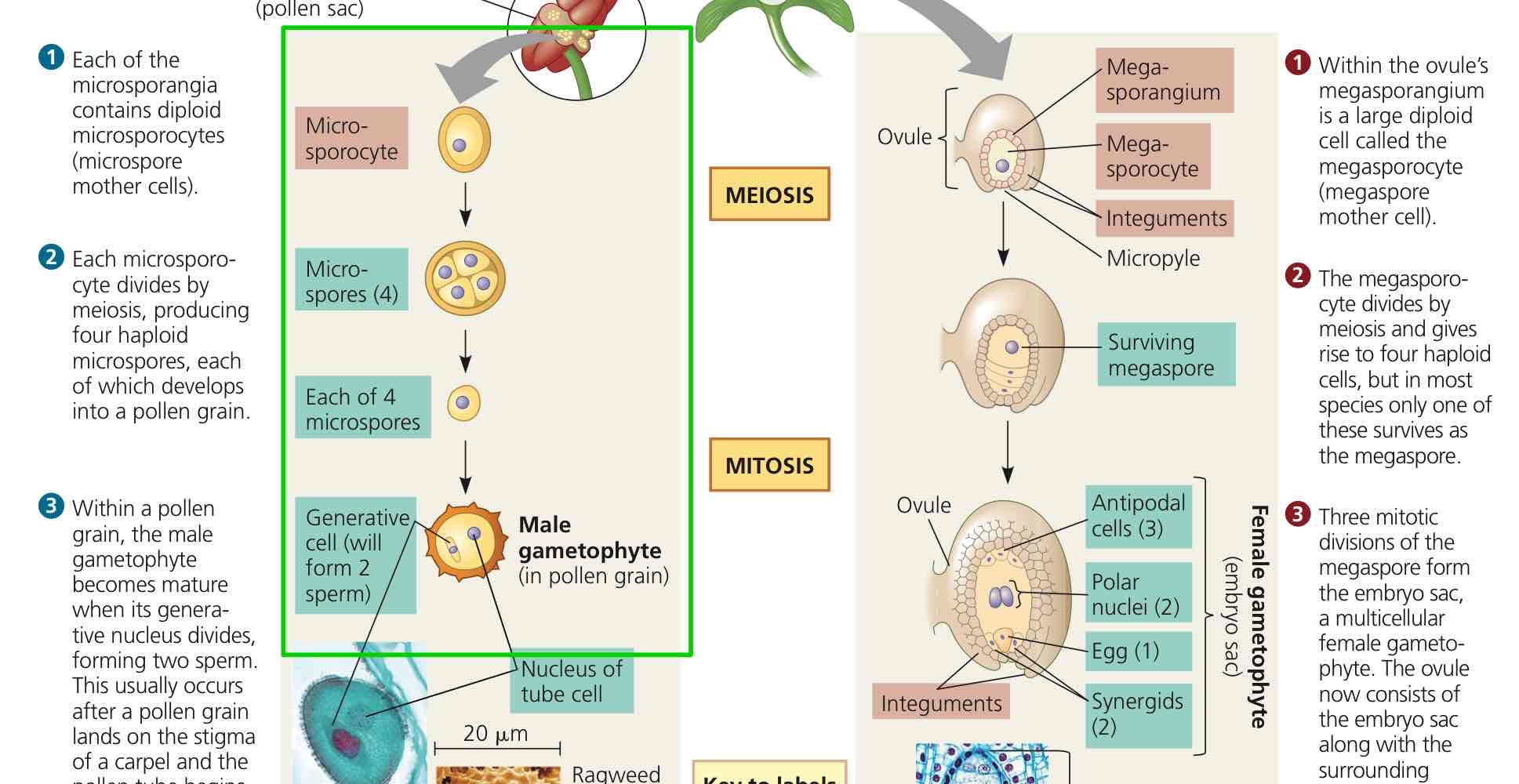
Given you have one megasporocyte, how many megaspores survive? How many megagametophytes do you then have?
1 megasporocyte : 1 megaspore : 1 megagametophyte.
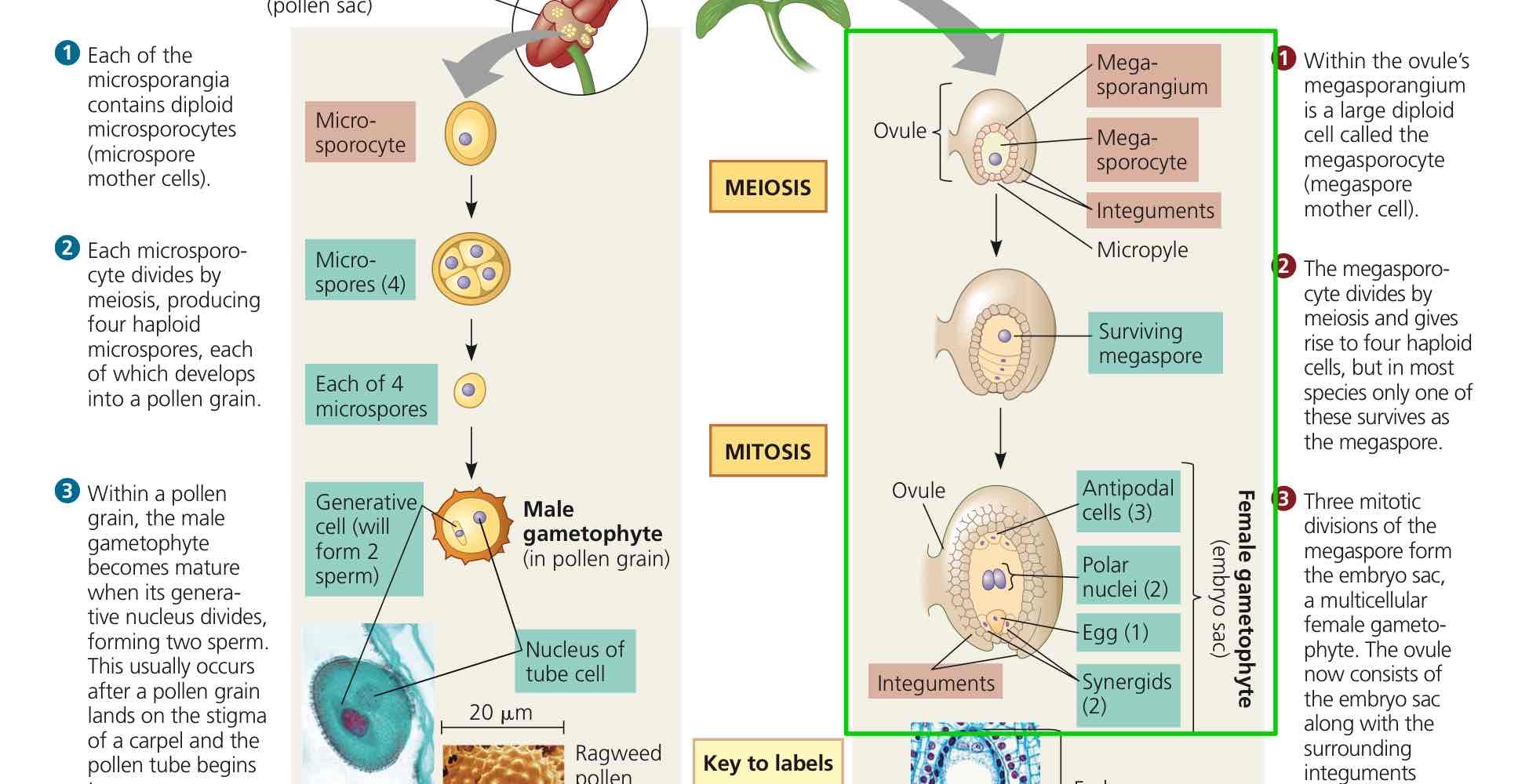
What type of cell division do microsporocytes and megasporocytes undergo to achieve microspores and megaspores, respectively?
Meiosis.
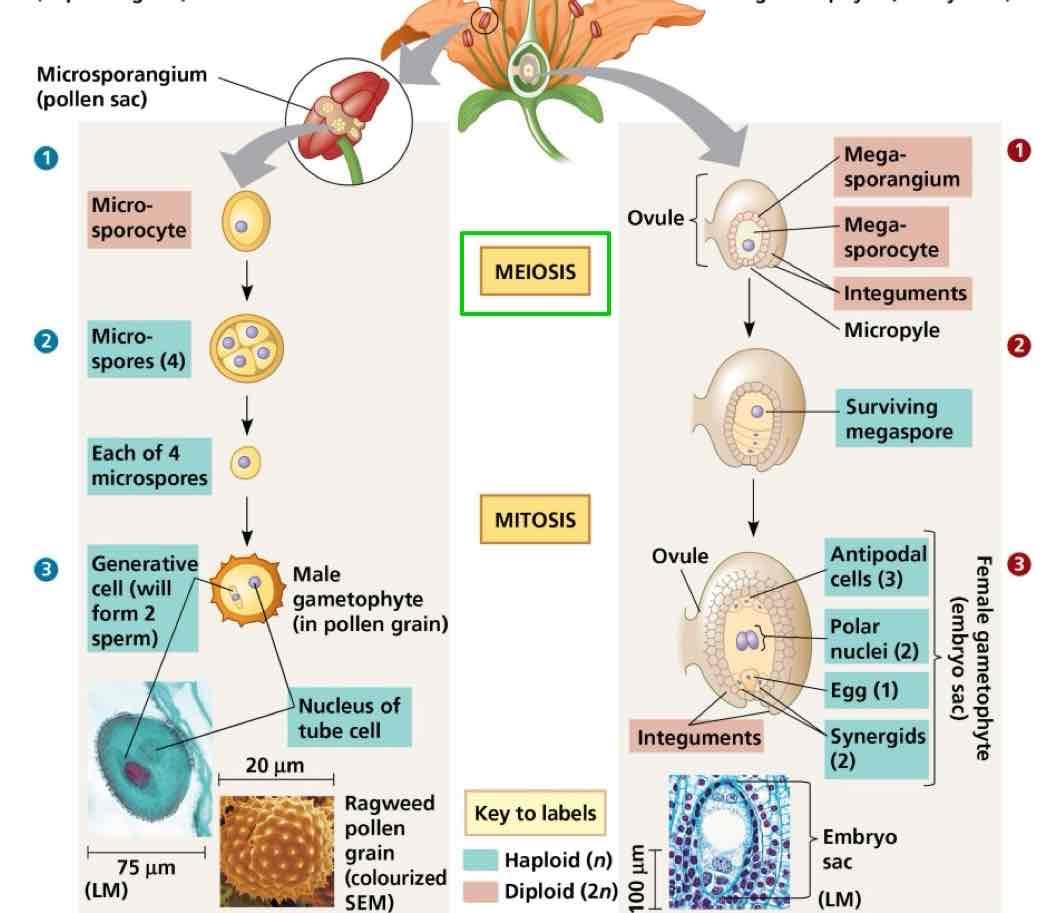
What type of cell division do microspores and megaspores undergo to become microgametophytes and megagametophytes, respectively?
Mitosis.
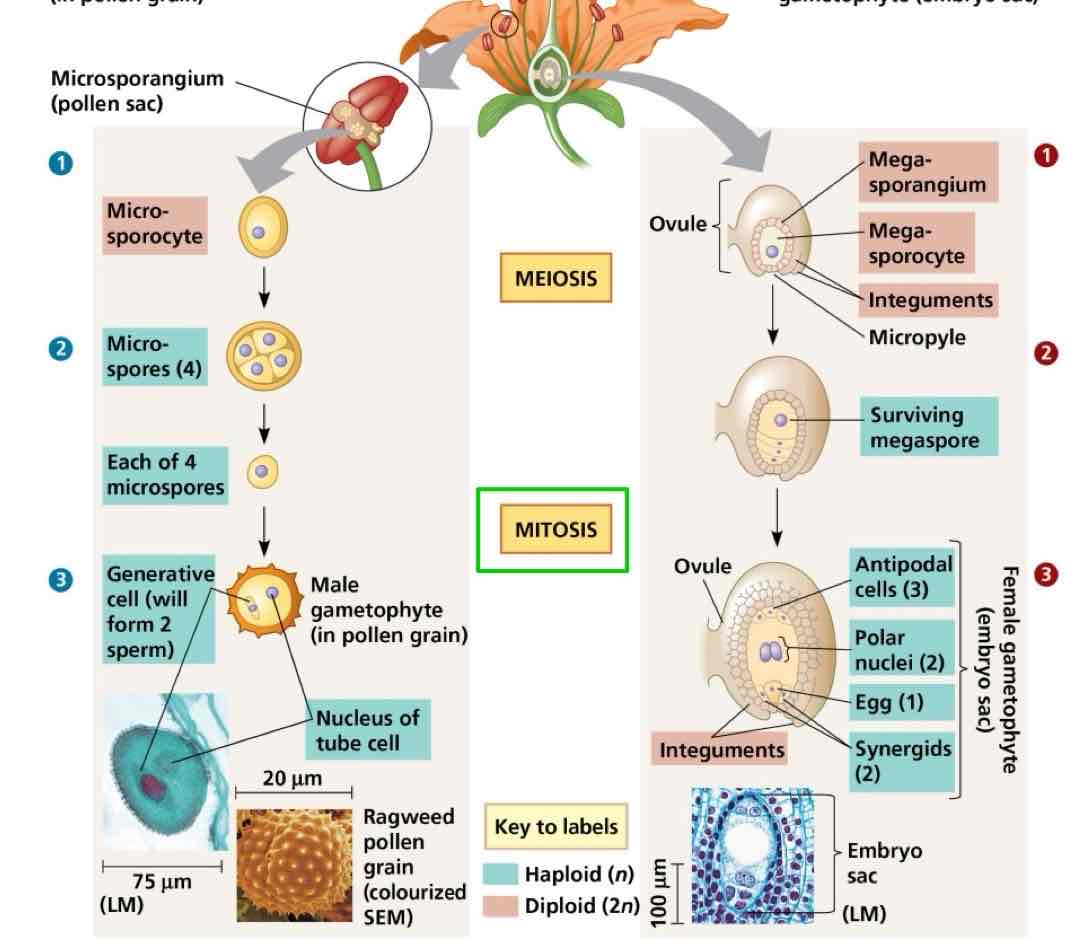
For the last time, what does meiosis, in plants, DO NOT produce?
Meiosis does not make gametes.
To be clear, what gametes are we transferring in plants?
The sperms to the egg. It just so happens that different land plants have evolved over time for more advantageous strategies in doing this.
Why is gamete transfer an issue for plants?
Plants are sessile. They cannot move like animals can. They need help.
What plants HAVE dependence on water for gamete transfer?
Bryophyta and Monilophyta.
What plants DO NOT HAVE dependence on water for gamete transfer?
Coniferophyta and Anthophyta.
Just a prelude about what’s to happen: give the 8 fundamental, typical series of steps to development from gametes to plant.
Pollination.
Fertilization.
Embryo development.
Fruit development.
Seed dispersal.
Seed dormancy.
Germination.
Sporophyte body development, a.k.a. plant development.
How is gamete transfer done in seed plants?
Pollination via wind or animals.
Yes, heterospory is an advantage. Yes, you could say you prevent self-fertilization due to this. However, you’re merely preventing something that could still happen. How do flowers prevent self-fertilization even more?
Incomplete flowers, i.e. by being unisexual, either being staminate or carpellate flowers.
Flower dimorphism, i.e. by shortening or lengthenining the style and doing the other to the stamen.
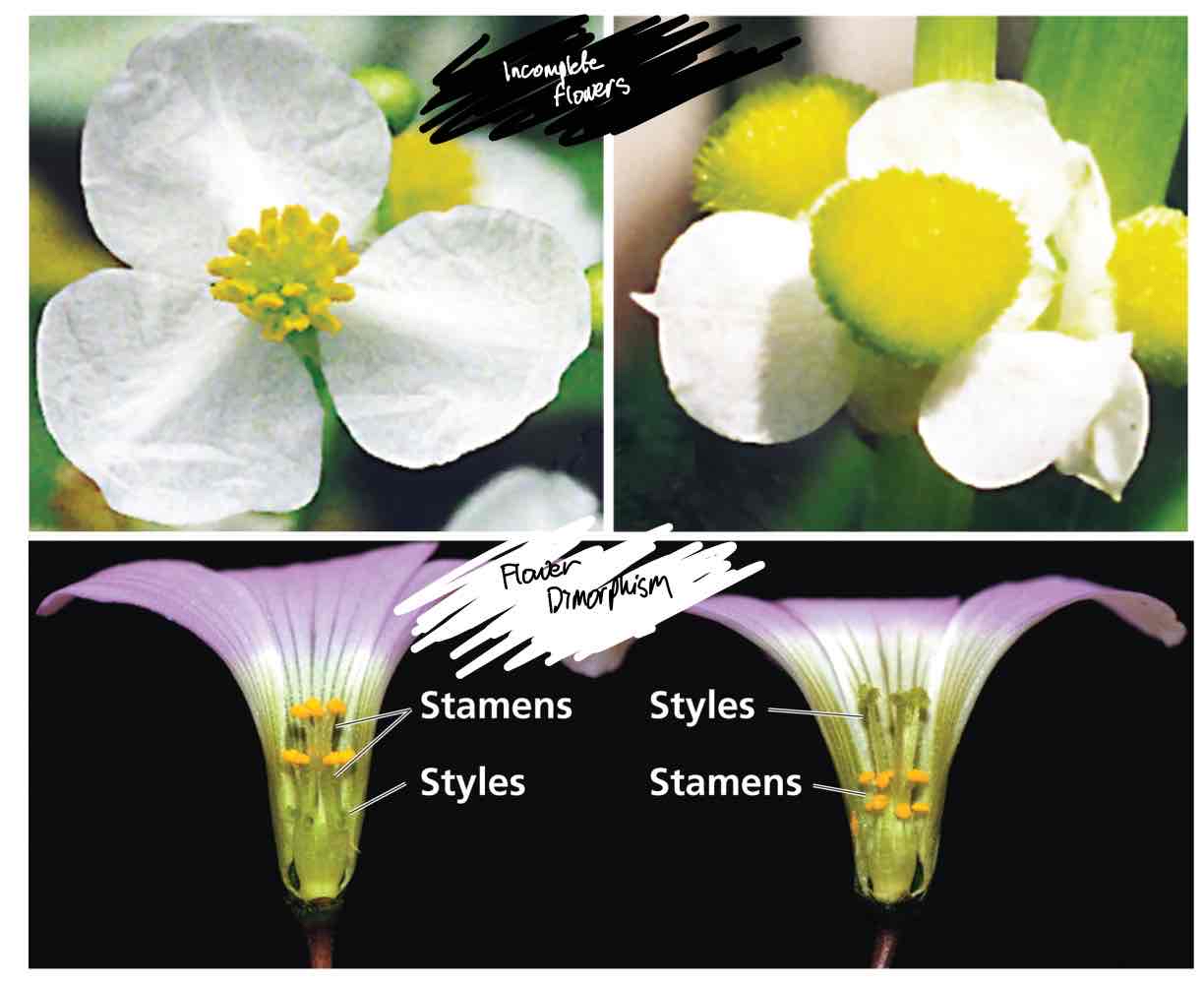
Staminate flowers
Flowers lacking the carpel, the “female reproductive system,” but maintaining the stamen, the “male reproductive system.”
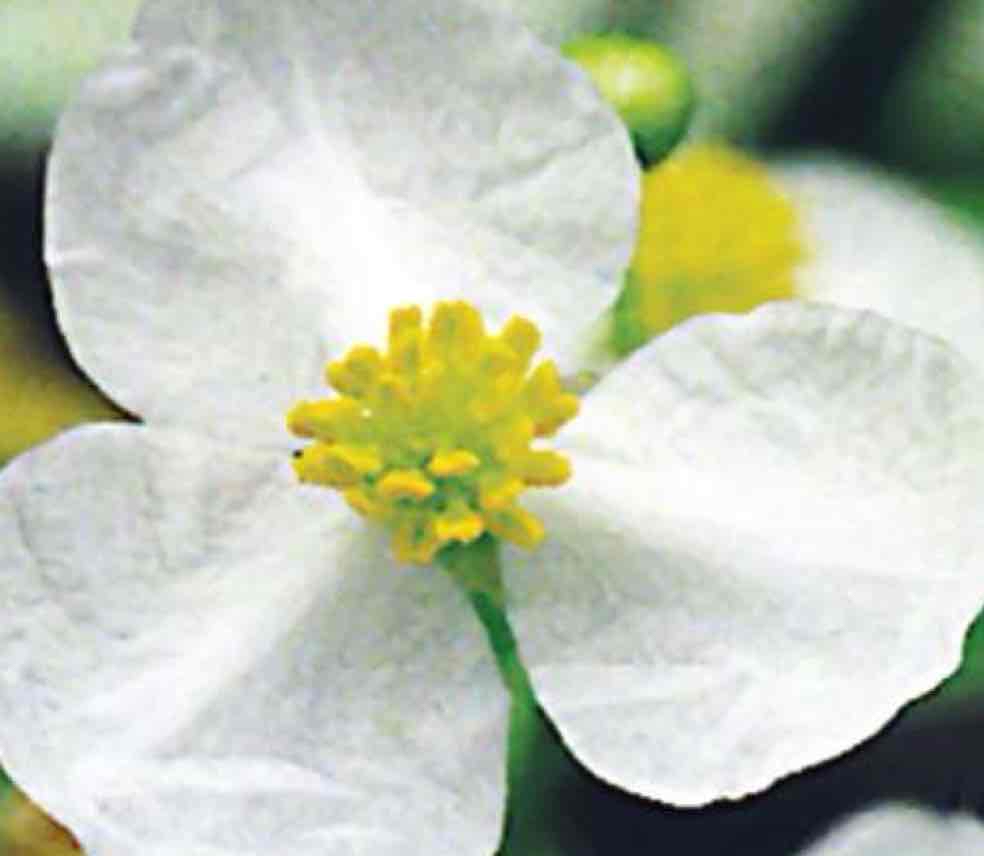
Carpellate flowers
Flowers lacking the stamen, the “male reproductive system,” but maintaining the carpel, the “female reproductive system.”
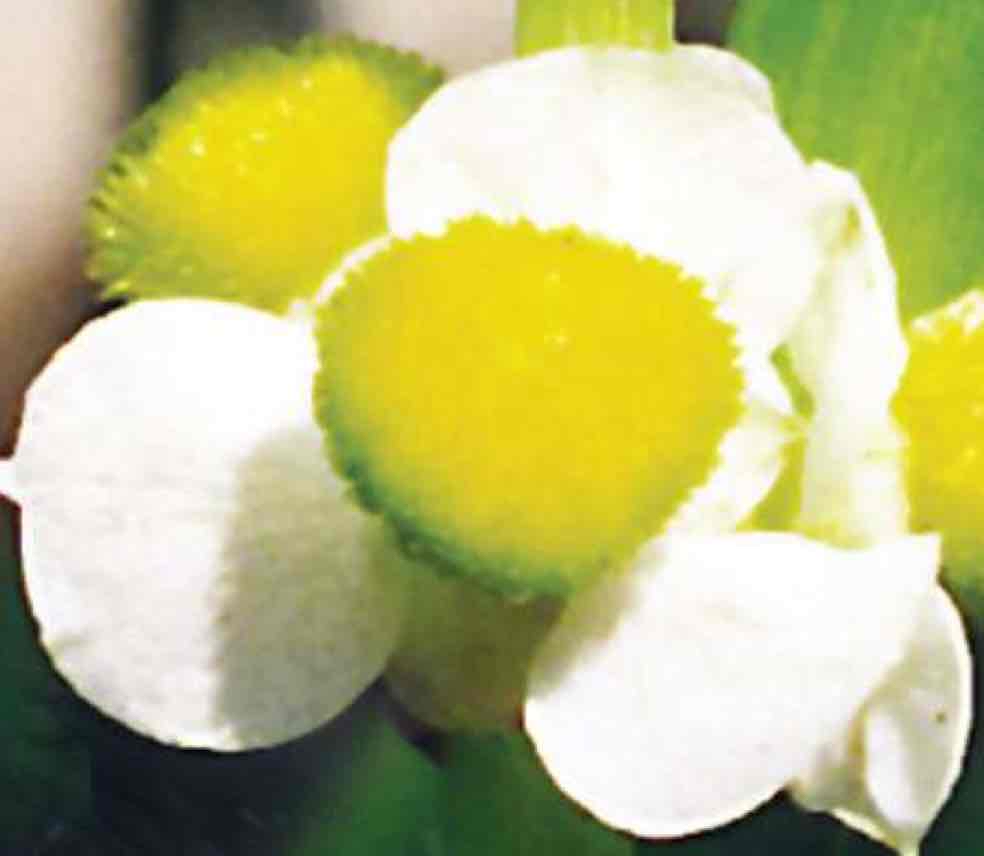
Thrum flower
Flowers with short styles and long stamens.
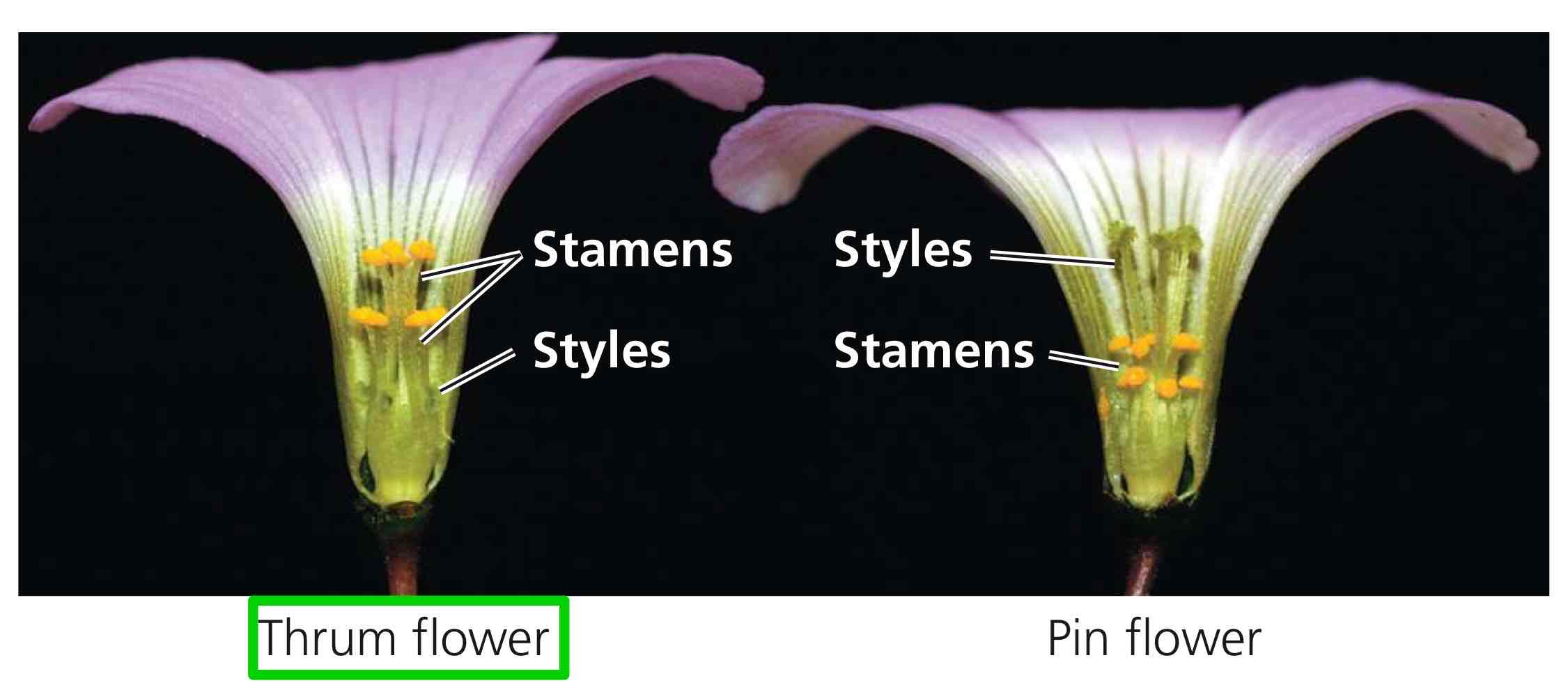
Pin flowers
Flowers with long styles and short stamens.

How does flower dimorphism help in preventing self-fertilization?
When pollinating, animals will find it difficult to pollinate on the same flower if the flower was a thrum flower, as the styles are too far to reach. Instead, they go to pin flowers, as the styles are easy to reach.
Double fertilization
Union in flowering plants, wherein one sperm fertilizes the egg to form the embryo, while one other sperm combines with two polar nuclei to form endosperm.
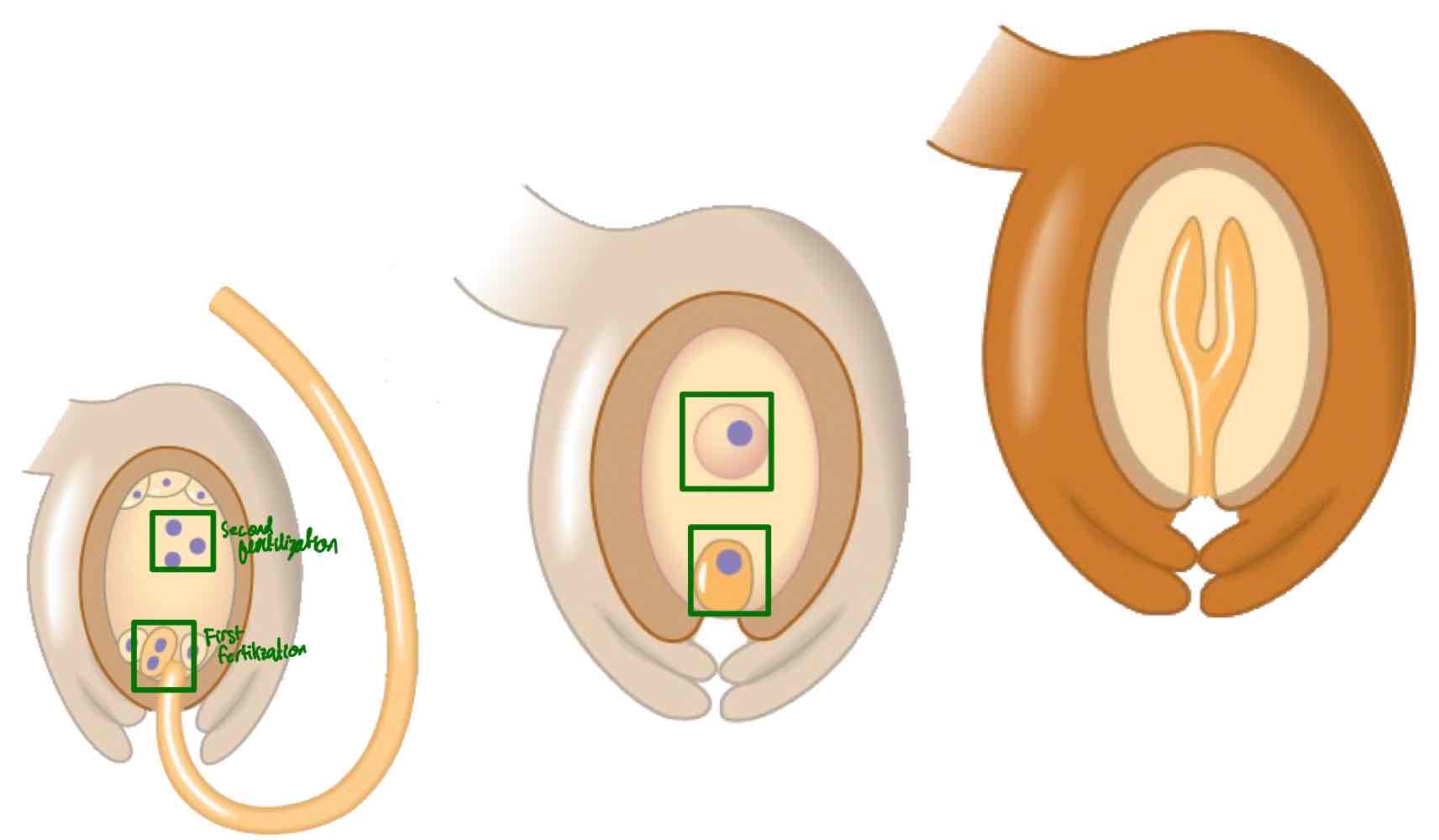
Embryo development
The transformation of a zygote to an embryo, happening within the seed (not ovule anymore).

Explain the process of embryo development.
First mitotic division occurs, zygote splits into basal cell and terminal cell.
More mitosis.
Basal cell divides and produces a suspensor.
Terminal cell divides and forms proembryo (early embryo) attached to the suspensor, and then forms into an embryo.
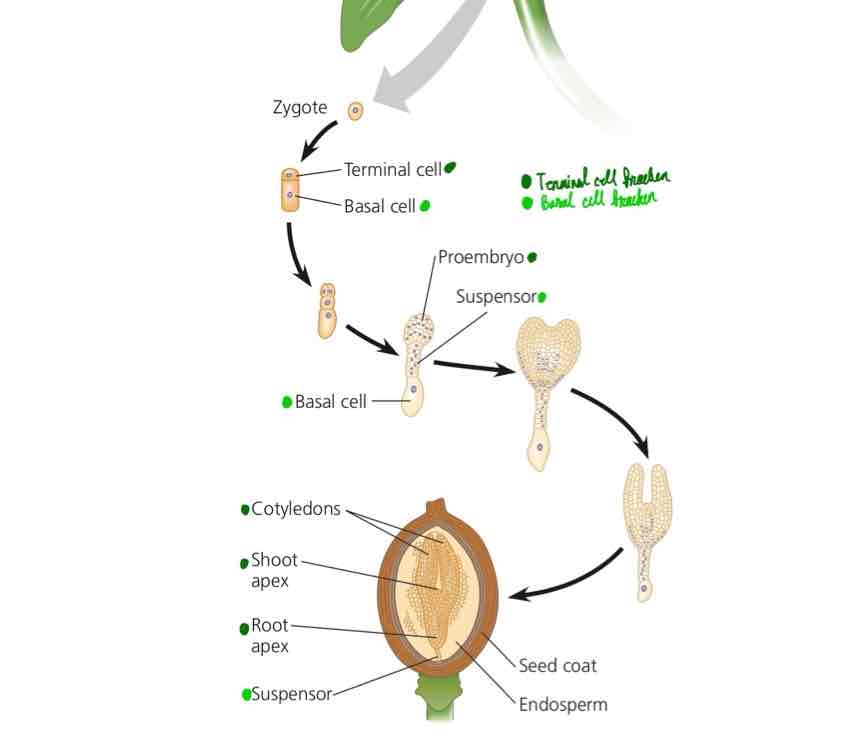
What does the basal cell give rise to?
Divides to produce suspensor.

Suspensor
Thread of cells anchoring embryo to parent plant, helping in nutrient transfer to embryo from parent plant and, in some angiosperms, from endosperm.
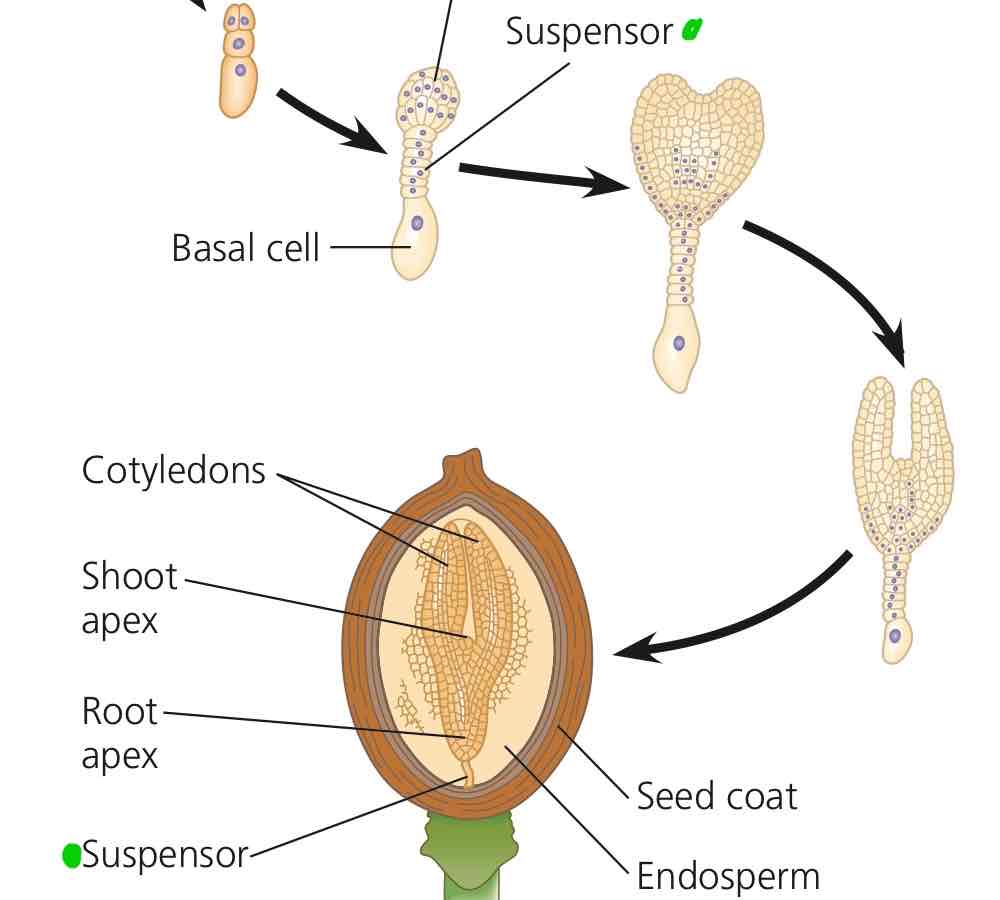
What does the terminal cell give rise to?
Divides to produce most of the embryo.

What are the 4 embryonic structures present in embryo development?
Cotyledons, epicotyl, hypocotyl, and radicle.
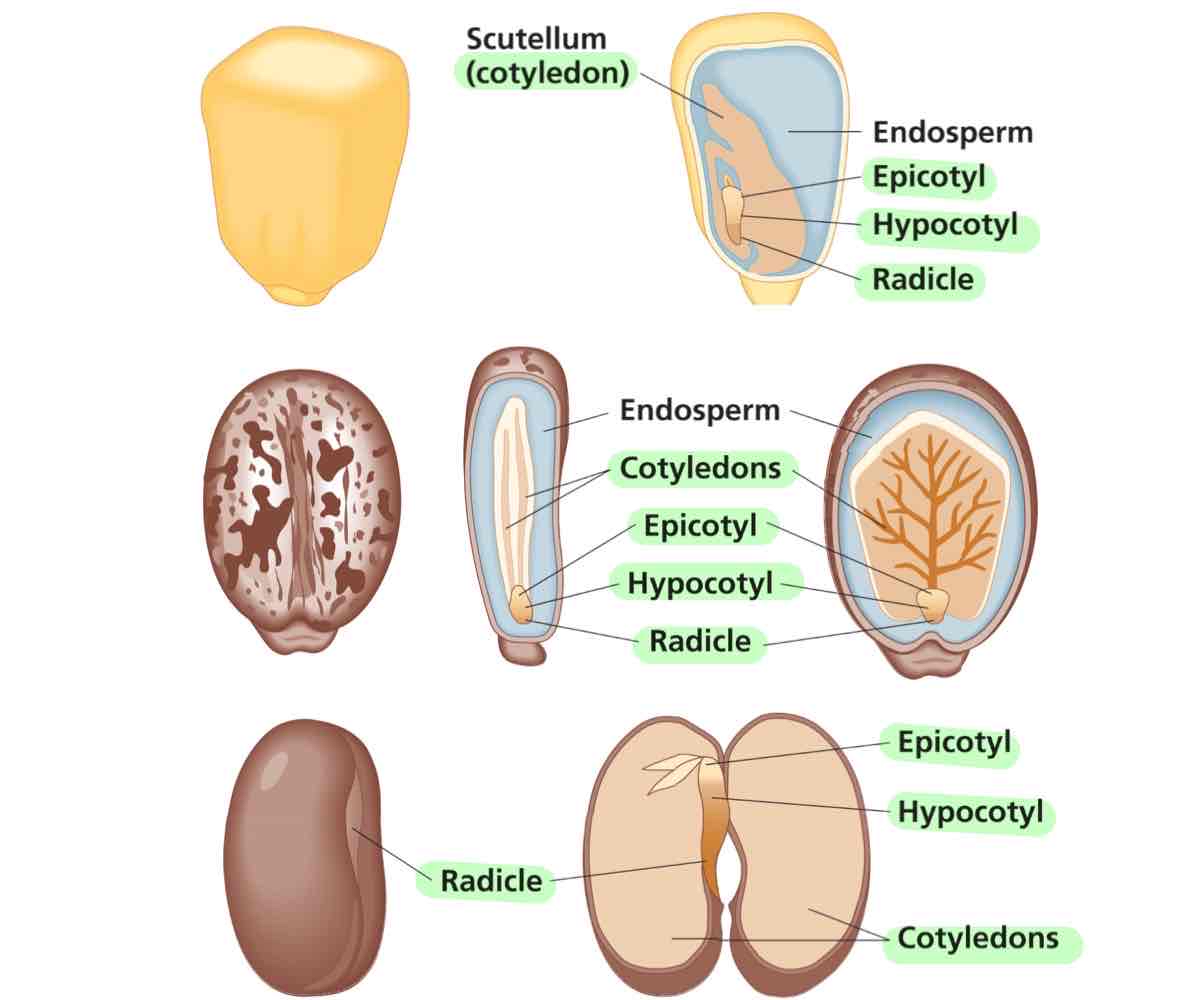
Cotyledons
Seed leaves, which can be thin or thick.

Epicotyl
Region of the embryo forming into shoot apical meristem.

Hypocotyl
Region of the embryo beneath the cotyledons, supporting overall structure of the embryo.
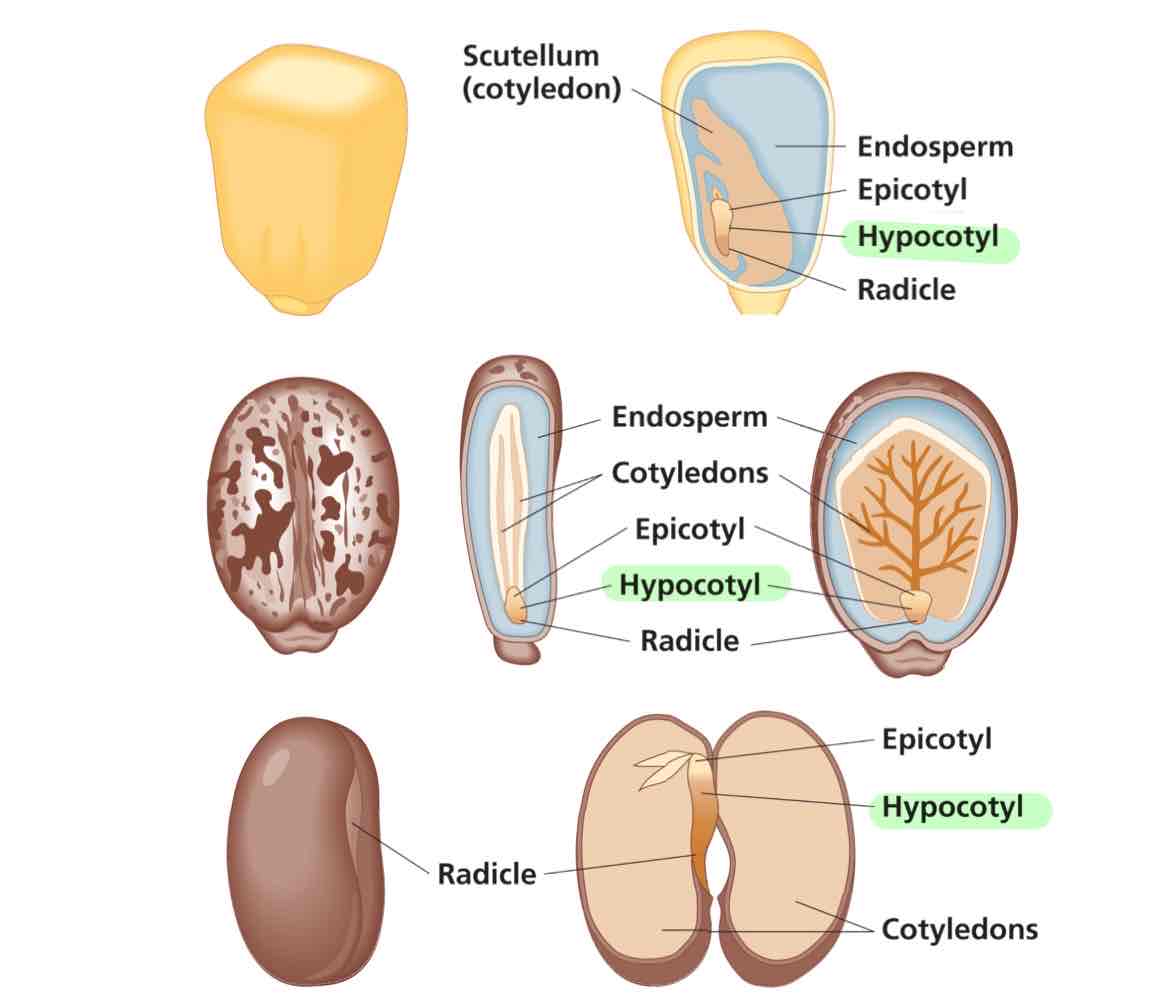
Radicle
Region of the embryo forming into root apical meristem.
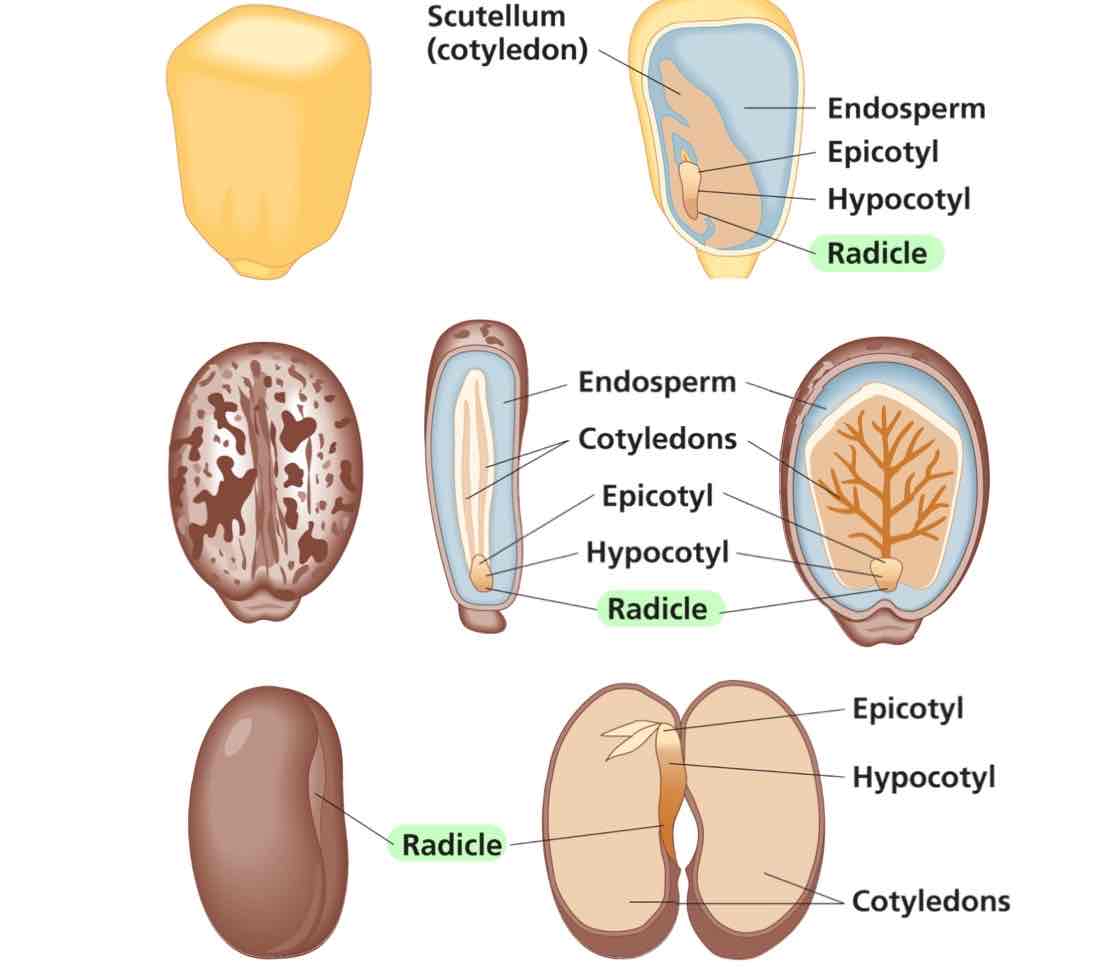
Fruit
Mature ovary of a flower, protecting seeds and aids in seed dispersal.
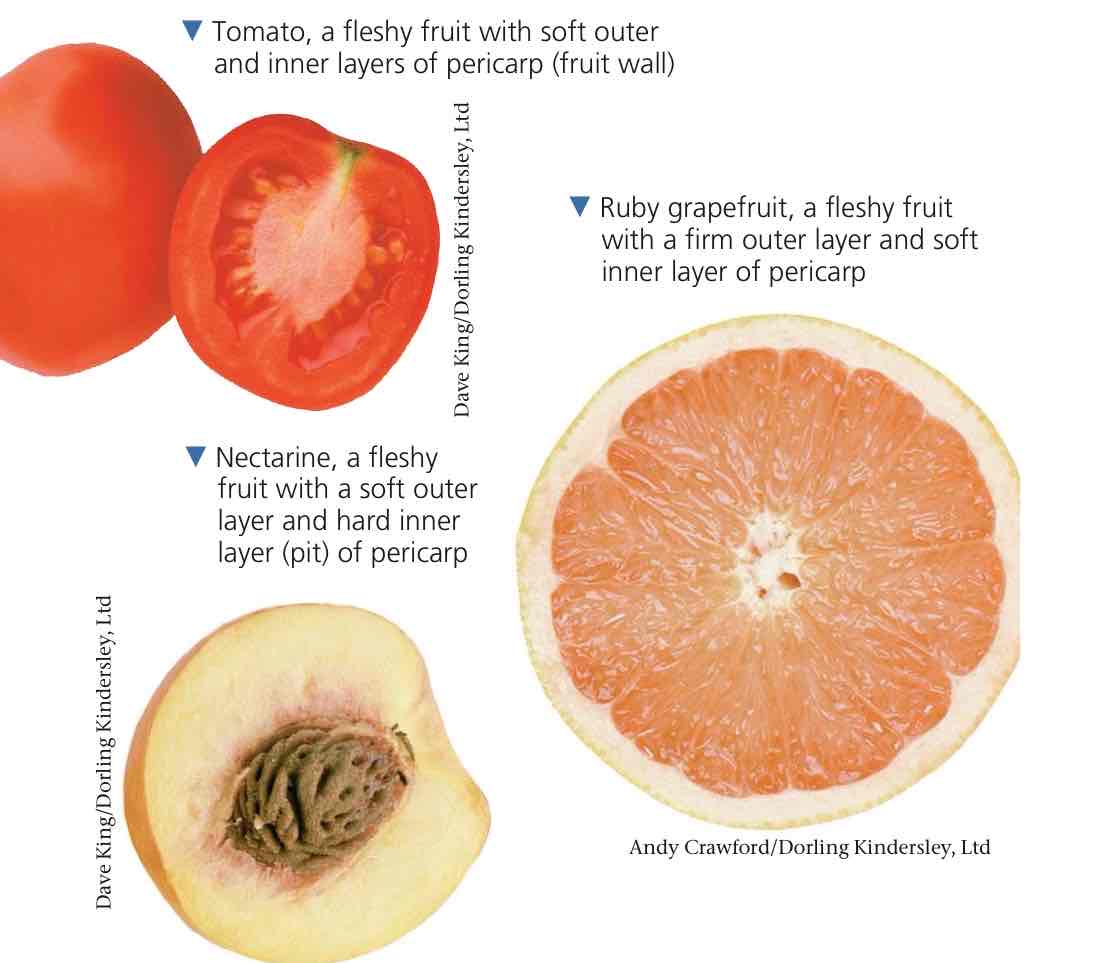
What are the 3 types of fruits?
Simple, aggregate, and multiple.
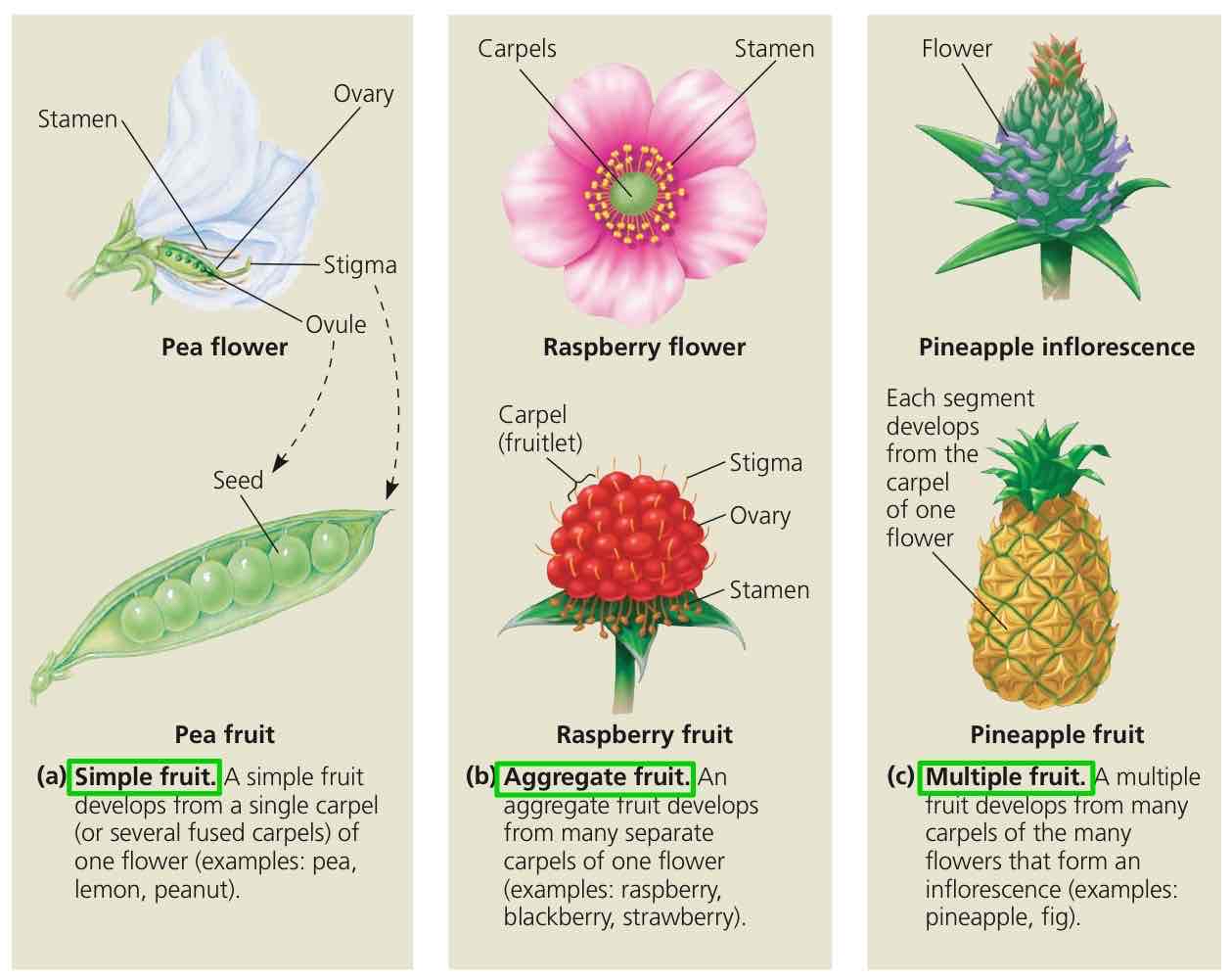
Simple fruit
Fruit developed from a single ovary of one flower on one plant.
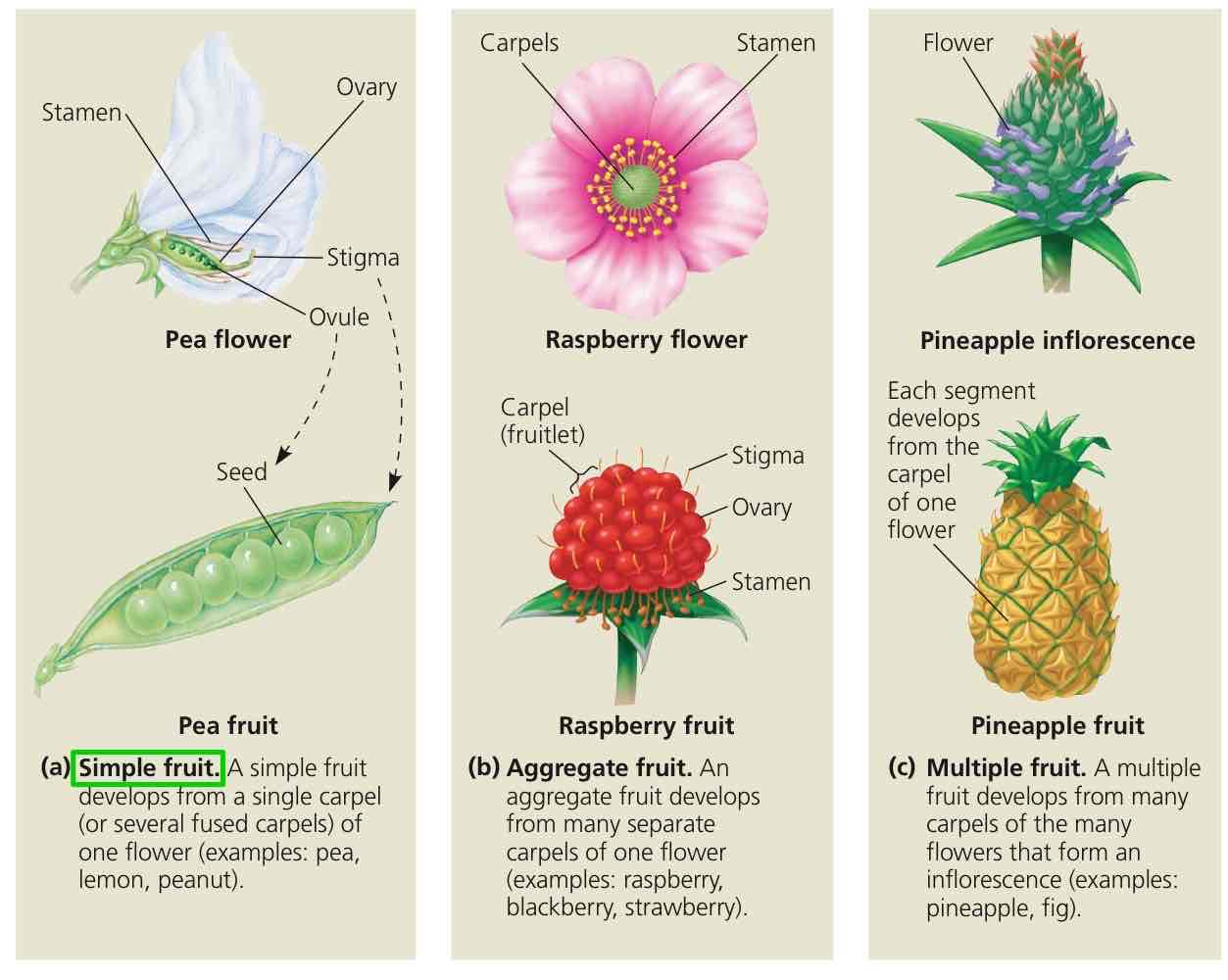
Aggregate fruit
Fruit developed from multiple ovaries on one flower on one plant.

Multiple fruit
Fruit developed from multiple ovaries from multiple flowers on one plant.
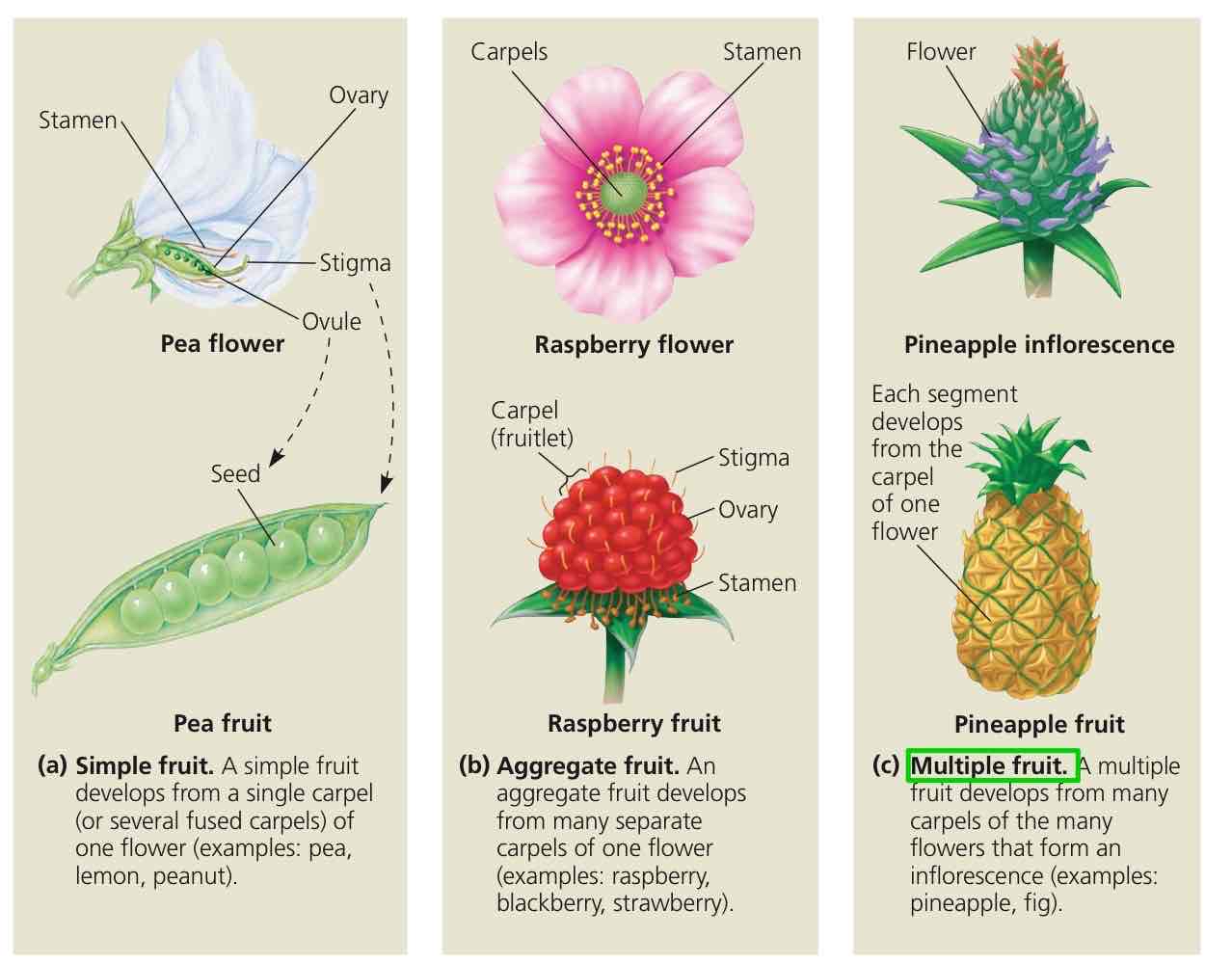
What structure helps gymnosperms undergo seed dispersal? How?
Via seed coat extensions, because the wind is what blows them away. Imagine the seed coat extensions like Batman’s cape as he flows through the wind.
How do angiosperms undergo seed dispersal?
Via fruit, water, wind, or animals.
Is the genetic makeup “diverse” or “unique” in a seed coat? Why?
No, because the seed coat (2N) comes from the sporophyte parent (2N).
Is the genetic makeup “diverse” or “unique” in a seed endosperm? Why?
Somewhat yes, because the endosperm (3N) consists of 2N from the polar nulcei of the megagametophyte (2N) and 1N the sperm of the microgametophyte (1N).
Is the genetic makeup “diverse” or “unique” in a seed embryo? Why?
Yes, because an embryo (2N) is made up of a sperm cell (1N) and an egg cell (1N).
In relation to a fully grown sporophyte body plan, what does the embryo contain?
The 1º dermal, ground, and vascular tissue.
The SAM and the RAM established.
Cotyledons.
What is endosperm similar to in animals?
Yolk.
What is germination? When does it happen?
The breaking out of the seed, breaking free from dormancy due to sufficient environmental variables like water, oxygen, and temperature.
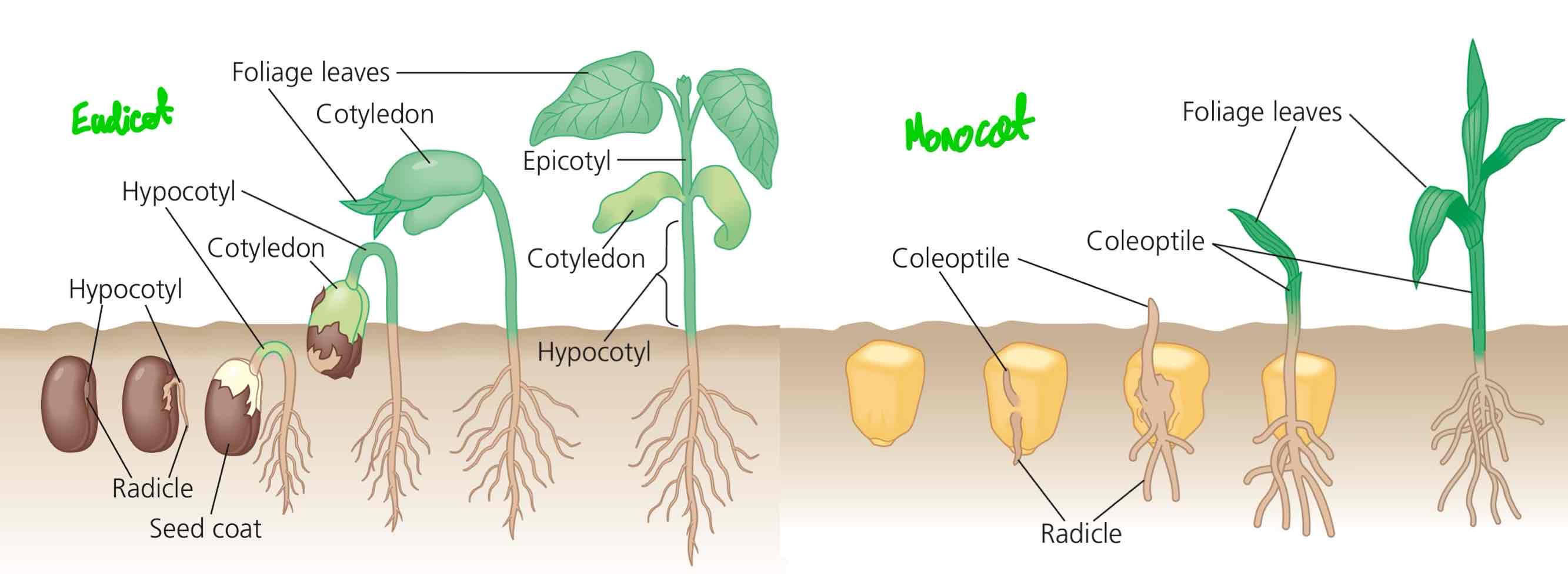
Imbition
The rupturing of the seed coat, part of the process of germinating.
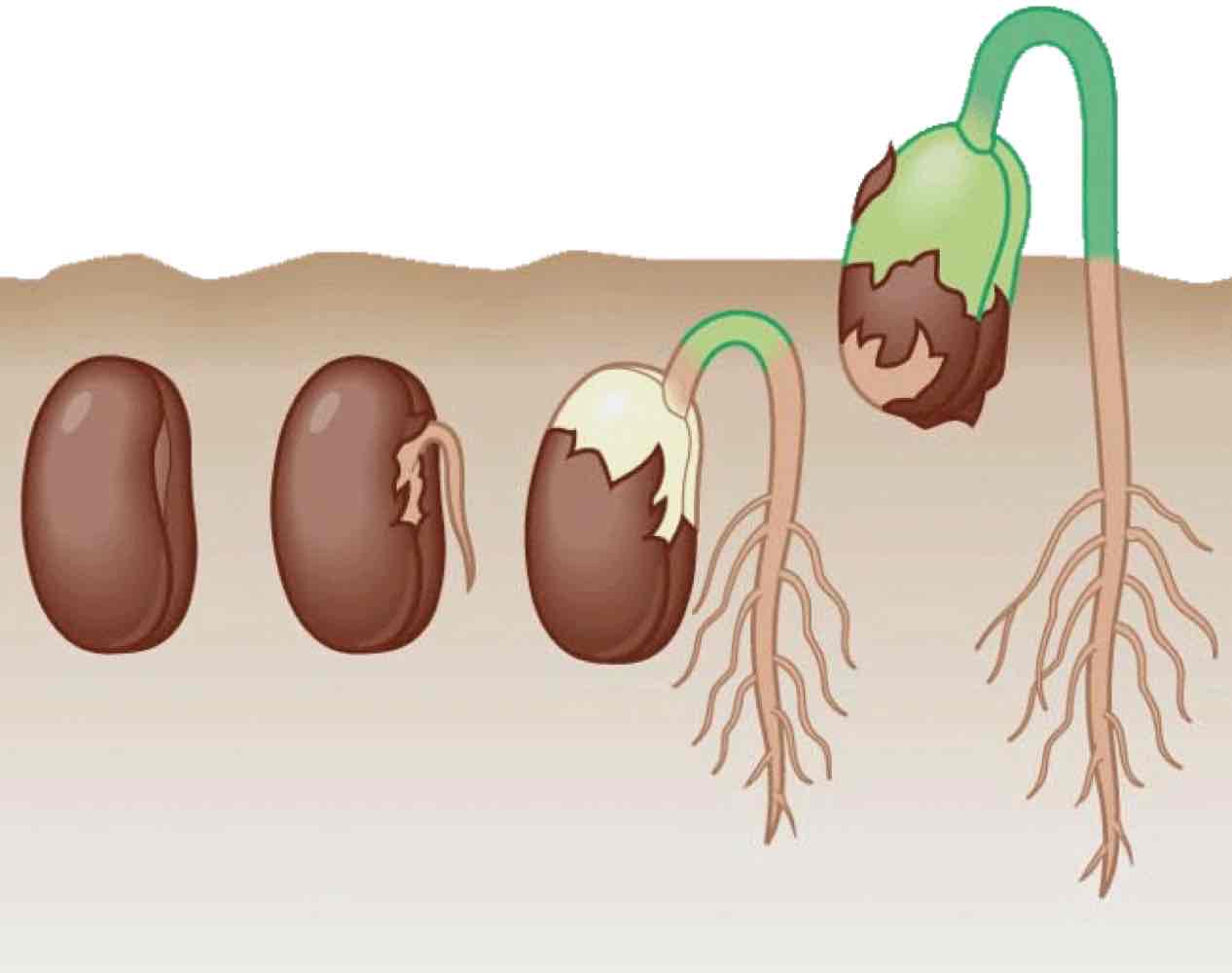
What are the two important structures germinating from the seed?
Radicle and shoot.
At which direction does the radicle emerge during germination?
Downwards, giving rise to RAM.
At which direction does the shoot emerge during germination?
Upwards, giving rise to SAM.
When the shoot emerges, where will the cotyledon emerge?
Can either be above or below soil.
All-in-all, what happens to the cotyledons, the embryonic radicle, the embryonic shoot, the endosperm after germination, a.k.a. right when plant development starts to occur?
Cotyledons photosynthesize, embryonic radicle gives rise to RAM, embryonic shoot gives rise to SAM, and endosperm is used up.